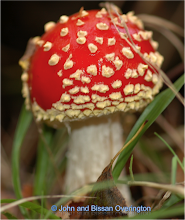ATCC: L01XE15
Wikipedia: Crizotinib
Non-small cell lung carcinomas (NSCLC) are cancers of the epithelial cells in the lung and describe all types of lung carcinomas other than small cell carcinomas. NSCLCs make up 88% of all lung carcinomas (see Cancer Research UK pages) and comprise genetically distinct classes of cancer, the most common are: Lung adenocarcinoma, large cell carcinoma and squamous cell carcinoma. Across the NSCLC types, some tumors harbour an ALK fusion protein. The EML4-ALK fusion gene has been shown to be affect the outcome of drug response and cells show resistance to EGFR inhibitors.
Crizotinib is an orally-dosed receptor tyrosine kinase inhibitor with significant activity against ALK (UniProt:Q9UM73, CHEMBL4247), HGFR (also known as c-Met) (Uniprot:P08581 CHEMBL3717) and RON (UniProt:Q04912, CHEMBL2689), and it is the first in class agent against any of these targets. However, ALK is the main targeted protein in these ALK-dependent, EGFR inhibitor resistant cancers. ALK is a trans-membrane receptor tyrosine kinase with the regulatory domains being extracellular and the kinase catalytic domain intracellular. The amino-acid sequence of the full wild type kinase is:
>ALK (full length wild type, kinase domain in red) MGAIGLLWLLPLLLSTAAVGSGMGTGQRAGSPAAGPPLQPREPLSYSRLQRKSLAVDFVV PSLFRVYARDLLLPPSSSELKAGRPEARGSLALDCAPLLRLLGPAPGVSWTAGSPAPAEA RTLSRVLKGGSVRKLRRAKQLVLELGEEAILEGCVGPPGEAAVGLLQFNLSELFSWWIRQ GEGRLRIRLMPEKKASEVGREGRLSAAIRASQPRLLFQIFGTGHSSLESPTNMPSPSPDY FTWNLTWIMKDSFPFLSHRSRYGLECSFDFPCELEYSPPLHDLRNQSWSWRRIPSEEASQ MDLLDGPGAERSKEMPRGSFLLLNTSADSKHTILSPWMRSSSEHCTLAVSVHRHLQPSGR YIAQLLPHNEAAREILLMPTPGKHGWTVLQGRIGRPDNPFRVALEYISSGNRSLSAVDFF ALKNCSEGTSPGSKMALQSSFTCWNGTVLQLGQACDFHQDCAQGEDESQMCRKLPVGFYC NFEDGFCGWTQGTLSPHTPQWQVRTLKDARFQDHQDHALLLSTTDVPASESATVTSATFP APIKSSPCELRMSWLIRGVLRGNVSLVLVENKTGKEQGRMVWHVAAYEGLSLWQWMVLPL LDVSDRFWLQMVAWWGQGSRAIVAFDNISISLDCYLTISGEDKILQNTAPKSRNLFERNP NKELKPGENSPRQTPIFDPTVHWLFTTCGASGPHGPTQAQCNNAYQNSNLSVEVGSEGPL KGIQIWKVPATDTYSISGYGAAGGKGGKNTMMRSHGVSVLGIFNLEKDDMLYILVGQQGE DACPSTNQLIQKVCIGENNVIEEEIRVNRSVHEWAGGGGGGGGATYVFKMKDGVPVPLII AAGGGGRAYGAKTDTFHPERLENNSSVLGLNGNSGAAGGGGGWNDNTSLLWAGKSLQEGA TGGHSCPQAMKKWGWETRGGFGGGGGGCSSGGGGGGYIGGNAASNNDPEMDGEDGVSFIS PLGILYTPALKVMEGHGEVNIKHYLNCSHCEVDECHMDPESHKVICFCDHGTVLAEDGVS CIVSPTPEPHLPLSLILSVVTSALVAALVLAFSGIMIVYRRKHQELQAMQMELQSPEYKL SKLRTSTIMTDYNPNYCFAGKTSSISDLKEVPRKNITLIRGLGHGAFGEVYEGQVSGMPN DPSPLQVAVKTLPEVCSEQDELDFLMEALIISKFNHQNIVRCIGVSLQSLPRFILLELMA GGDLKSFLRETRPRPSQPSSLAMLDLLHVARDIACGCQYLEENHFIHRDIAARNCLLTCP GPGRVAKIGDFGMARDIYRASYYRKGGCAMLPVKWMPPEAFMEGIFTSKTDTWSFGVLLW EIFSLGYMPYPSKSNQEVLEFVTSGGRMDPPKNCPGPVYRIMTQCWQHQPEDRPNFAIIL ERIEYCTQDPDVINTALPIEYGPLVEEEEKVPVRPKDPEGVPPLLVSQQAKREEERSPAA PPPLPTTSSGKAAKKPTAAEISVRVPRGPAVEGGHVNMAFSQSNPPSELHKVHGSRNKPT SLWNPTYGSWFTEKPTKKNNPIAKKEPHDRGNLGLEGSCTVPPNVATGRLPGASLLLEPS SLTANMKEVPLFRLRHFPCGNVNYGYQQQGLPLEAATAPGAGHYEDTILKSKNSMNQPGPThe ELM4-ALK translocation protduces a chimeric protein with the N-terminal part of ELM4 and the catalytic region of ALK. This chimeria is constitutively active causing unregulated proliferation (Soda et al)
The structure of ALK in complex with crizotinib has been determined (2XP2)
ALK and other proteins inhibited by crizotinib are members of the large protein kinase family, the target of several other recently approved drugs - with the approval of crizotinib there are now 12 US approved small molecule protein kinase inhibitors (
Imatinib, Gefitinib, Erlotinib, Sorafenib, Dasatinib, Sunitinib, Nilotinib, Lapatinib, Pazopanib, Vandetanib & Vemurafenib), with over an additional 300 protein kinase inhibitors that have progressed to clinical trials.The molecular formula for crizotinib is C21H22Cl2FN5O, with a molecular weight of 450.34 Da. (IUPAC: (R)-3-[1-(2,6- Dichloro-3-fluorophenyl)ethoxy]-5-[1-(piperidin-4-yl)-1H-pyrazol-4-yl]pyridin-2-amine, Canonical SMILES:CC(C1=C(C=CC(=C1Cl)F)Cl)OC2=C(N=CC(=C2)C3=CN(N=C3)C4CCNCC4)N, InChI key:KTEIFNKAUNYNJU-GFCCVEGCSA-N, Chemspider:9801307, PubChem:11626560). It is fully rule of five compliant. Crizotinib has two ionizable centres with a pKa of 9.4 (for the piperidinium cation) and 5.6 (for the pyridinium cation). The experimental logD (octanol/water) at pH 7.4 is 1.65. Crizotinib is a chirally pure, synthetic small molecule drug.
Standard dosing of Crizotinib is 250mg twice daily (so a 500 mg daily dose - equivalent to 1,110 umol). The mean absolute bioavailability of Crizotinib is 43% following the administration of a single 250 mg oral dose. Crizotinib shows a median time to achieve peak concentration (Tmax) of 4 to 6 hours. Following crizotinib 250 mg twice daily dosing, steady state drug levels are reached within 15 days. The volume of distribution (Vss) of crizotinib is 1,772 L (following intravenous administration of a 50 mg dose) - so crizotinib is extensively distribution into tissues from the plasma; plasma protein binding (ppb) is 91%, and it is a substrate for P-glycoprotein (P-gp).
Crizotinib is predominantly metabolized by CYP3A4 and CYP3A5. The primary metabolic pathways in humans are oxidation of the piperidine ring to crizotinib lactam and O-dealkylation, followed by subsequent Phase 2 conjugation of O-dealkylated metabolites. Crizotinib is an inhibitor of CYP3A. The mean apparent plasma terminal half-life of crizotinib iss 42 hours, with an apparent clearance (CL/F) of 100 L/hr following a single dose, or 60 L/hr for the 250 mg twice daily standard dosing - this is most likely due to inhibition of CYP3A4/5.
Crizotinib is marketed by Pfizer, full prescribing information can be found here.




Comments